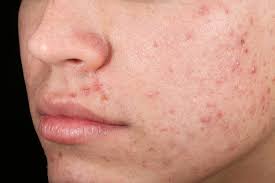So your acne finally cleared up – but your skin still doesn’t look clear. Maybe you’re left with red or dark marks, or perhaps actual indented scars that just won’t budge no matter what cream you try. Here’s something that might surprise you: that redness and those scars?
They’re completely different skin issues that need totally different treatments.
Let’s break down what’s actually happening on your skin and why one-size-fits-all solutions rarely work.

Post-Acne Redness: The Temporary Visitor
That red or dark spot left behind after a pimple heals? That’s called post-inflammatory hyperpigmentation (PIH) or post-inflammatory erythema (PIE) – basically, your skin’s dramatic response to the inflammation from acne.
What it is:
When your skin gets inflamed (thanks, acne), it produces extra pigment or increased blood flow to that area as part of the healing process. This leaves behind flat, discolored marks – red, pink, purple, or brown, depending on your skin tone.
The good news: These marks are temporary. They sit on the surface level of your skin and will fade over time – though that can take months or even over a year without treatment.
How to treat it:
Since PIH and PIE are pigmentation issues, treatments focus on:
- Brightening serums with ingredients like vitamin C or niacinamide
- Chemical peels that gently exfoliate and fade discoloration
- Laser treatments targeting pigment (like IPL or specific wavelength lasers)
- Consistent sunscreen use to prevent darkening
Most importantly, these marks respond well to topical treatments and lighter procedures because they haven’t damaged the skin’s actual structure.
How to treat it:
Since scars involve actual tissue damage, they need more intensive treatments:
- Microneedling with RF to stimulate deep collagen remodeling
- Fractional laser treatments that create controlled micro-injuries to rebuild collagen
- Chemical peels (deeper ones like TCA) for resurfacing
- Subcision for releasing tethered scars
- Dermal fillers for deeper indentations
These treatments work by either rebuilding lost collagen or breaking up scar tissue – basically, restructuring your skin from within.
Why This Matters for Your Treatment Plan
Using a brightening cream on indented scars?
It won’t work – you’re treating pigment when the issue is structure.
Trying aggressive resurfacing on simple redness?
You’re overdoing it and might cause more damage.
Getting the right diagnosis is crucial. Your treatment needs to match what’s actually happening in your skin – surface discoloration vs. deep structural damage.
The Takeaway
Post-acne redness and acne scars might look similar at first glance, but they’re fundamentally different problems. Redness is temporary and surface-level; scars are permanent and structural. Treating them the same way is like using a band-aid for a broken bone – it just doesn’t match the problem.
The best approach?
Get a professional assessment. A dermatologist can determine exactly what you’re dealing with and create a targeted treatment plan that actually addresses your specific concerns.
Book a consultation at Welona, where our specialists will assess whether you’re dealing with redness, scars, or both – and design a personalized treatment plan to give you the smooth, clear skin you deserve.


